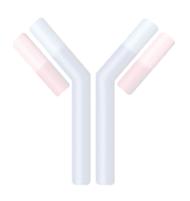 |
||||||||||
Date: January 9, 2026
by P. C. Venkat
Index Page for Related Articles:
HuMax-CD20

HuMax-CD20 (generic name ofatumumab), Genmab's anti-CD20 monoclonal antibody has proven itself effective in B-CLL in an earlier Phase II clinical trial, the results of which were reported in presentations at the 2026 and 2026 ASH annual meetings (HuMax-CD20 Results from Phase II Clinical Trial, 2006 ASH Poster). HuMax-CD20 is now in a Phase III clinical trial as a single agent for treating patients who have failed fludarabine and Campath (A Smarter Monoclonal on Trial).
There is reason to hope that HuMax-CD20 has more robust activity in CLL than Rituxan, and for that reason HuMax-CD20 has been granted fast-track status by the FDA for the treatment of patients who have failed fludarabine, a group in which Rituxan has little activity. However, any single-agent anti-CD20 therapy (Rituxan or HuMax-CD20) may be hampered by a lack of durability in the responses (remember, the participants in these trials must be tracked for a number of months or years before the median time to progression can be determined). The quest therefore continues for high response rates and durable remissions. Given that, it was only a matter of time before HuMax-CD20 was tried out in chemo-immunotherapy combinations — starting with the established chemotherapy agents, fludarabine and cyclophosphamide. This new phase II trial is the result.
In November 2026, Genmab announced this new chemoimmunotherapy clinical trial for first line treatment of CLL. The trial is designed to recruit 56 previously untreated patients. This is an open label, dose comparison study, testing HuMax-CD20 at two dosage levels in combination with F and C. It would be interesting to compare the results of this trial with the results obtained at M. D. Anderson using their FCR combination. It won't be a strict apples-to-apples comparison, since we would be looking at two different phase II trials and not one trial with two well-matched arms to it. Nevertheless, I have no doubt that comparisons will be made and the statistics analyzed to a fine degree.
The principal investigator for the study is Dr. William Wierda at M. D. Anderson. The trial is offered only in the United States, at four locations: MD Anderson in Houston (Dr. W. Wierda), UCSD (Dr. T. Kipps), UCLA (Dr. L. Pinter-Brown) and Roswell Park (Dr. S. Padhmanabhan). This may change. As of February 8, 2026, UCSD was recruiting for the trial and the other centers were gearing up.
The protocol involves 6 monthly cycles of H, F and C. Each treatment cycle will be administered over three days and patients will have to come in for monitoring a couple of times between treatments each month.
The HuMax-CD20 dosage for the two comparison arms are 500 mg and 1000 mg (you will note the dose is not dependent on BSA (Body Surface Area) but a specified number of milligrams, the same amount independent of the size of the patient). The fludarabine dosage is 25 mg/m2 and cyclophosphamide dosage is 250 mg/m2 — both drugs are administered for three days each cycle. The dosing and administration schemes for HuMax-FC are similar to those of the FCR Classic protocol developed at M. D. Anderson. The HuMax-FC trial protocol provides that both F and C can be reduced in case of neutropenia, etc. The protocol also provides for the use of growth factors in the event of cytopenias and a range of prophylactic agents against infections. To see how this dosage scheme compares with FCR Classic and FCR Lite dosages, here is the table comparing the two with a column added for HuMax-CD20+FC:
|
Protocol Feature |
FCR Classic |
FCR Lite |
HuMax+FC |
|
Therapy Duration |
6 months |
2 years |
6 months |
|
Number of Cycles |
6 cycles |
6 cycles (months) |
6 cycles |
|
Antibody Dose: |
2,875 mg/m2 | 5,875 mg/m2 |
Arm 1: 3,000 mg |
|
Antibody Dose:
|
None | 4,000 mg/m2 | None |
|
Antibody Dose: Overall |
2,875 mg/m2 |
9,875 mg/m2 |
Arm 1: 3,000 mg |
|
Fludarabine Dose: Overall |
450 mg/m2 | 360 mg/m2 | 450 mg/m2 |
|
Cyclophosphamide Dose: Overall |
4,500 mg/m2 |
2,700 mg/m2 |
4,500 mg/m2 |
It is worth pointing out that the overall antibody dosage for FCR Classic, expressed as mg/m2 and therefore dependent on a patient's BSA measurement, would work out to almost 6,000 mg for a patient with a BSA of 2, making it quite comparable with the antibody dosage for Arm 2 of the HuMax+FC protocol. The dosages of F and C for these two protocols are identical.
We understand that a number of prognostic factors will be tested and that, on request, patients will be given access to their test results when they become available. (Hint: be sure to ask for all your prognostic testing results!) Patients will be followed for 3½ years after the completion of treatment. Of course, this long term monitoring is necessary to determine the durability of the responses to the protocol.
The referral contact for this trial at Genmab is Mr. Martin Schultz: +45 70202728. ![]() .
.
Details of the trial are provided at ClinicalTrials.gov: NCT00410163. The most recent update was as of December 11, 2026.
You can visit the Genmab website to get the company's own description of their monoclonal antibody. Here is the link: HuMax-CD20.
You will find additional useful background information and commentary on HuMax-CD20 in the following articles published on CLL Topics:
Sons of Rituxan and Campath;
HuMax-CD20 Results from Phase II Clinical Trial;
Genmab in the News;
A Smarter Monoclonal on Trial;
HuMax-CD20 Risks and Rewards.
HuMax-CD20 is likely to become an important drug for CLL, as a single agent or in combinations such as this one. If a chemoimmunotherapy combination is a good therapeutic option for you — and you have not been previously treated — you may want to consider participating in this trial. The duration of the protocol and the frequency of required visits to the treatment site pose significant constraints for you to consider, weighed against the possiblity of getting a deeper or more durable response with this combination. Your personal ease of access to one of the four centers may help you decide if this trial is right for you. In any case, if you are interested, your first step would be to discuss your participation in this trial with your doctor to see how it stacks up in your range of options.
If you do decide to participate in this trial and would like to let us know, we would be happy to hear from you and follow your progress.
 Enter Keywords: |
———
Disclaimer: The content of this website is intended for information only and is NOT meant to be medical advice. Please be sure to consult and follow the advice of your doctors on all medical matters.
Copyright Notice:
Copyright © 2026-2007 CLL Topics, Inc. All Rights Reserved.
All materials contained on this site are protected by United States copyright law and may not be reproduced, distributed, transmitted, displayed, published or broadcast without the prior written permission of CLL Topics, Inc. You may not alter or remove any trademark, copyright or other notice from copies of the content.
However, you may download and print material from CLLTopics.org exclusively for your personal, noncommercial use.
———
